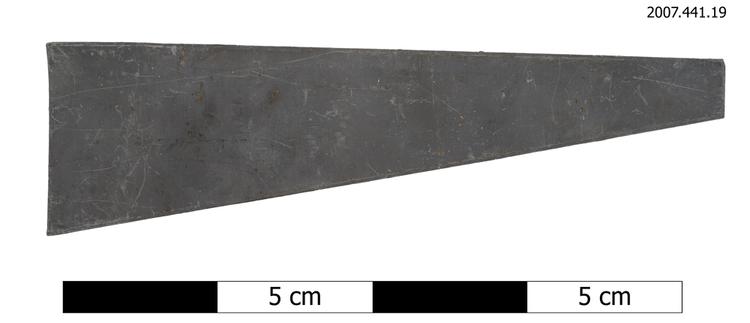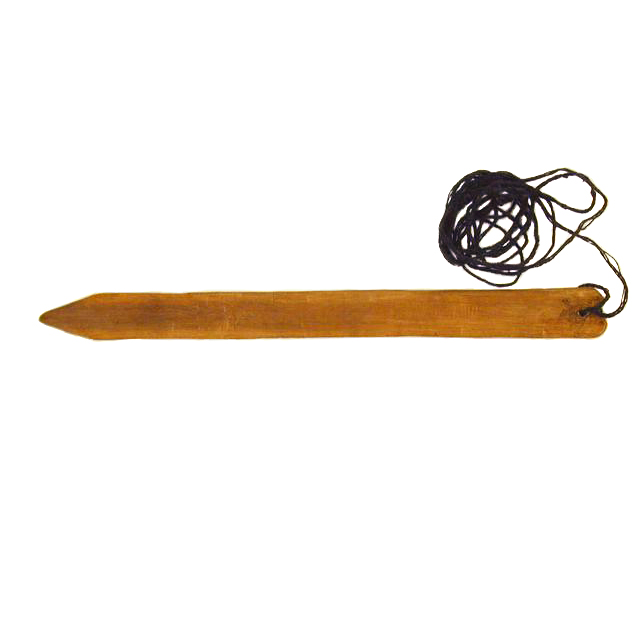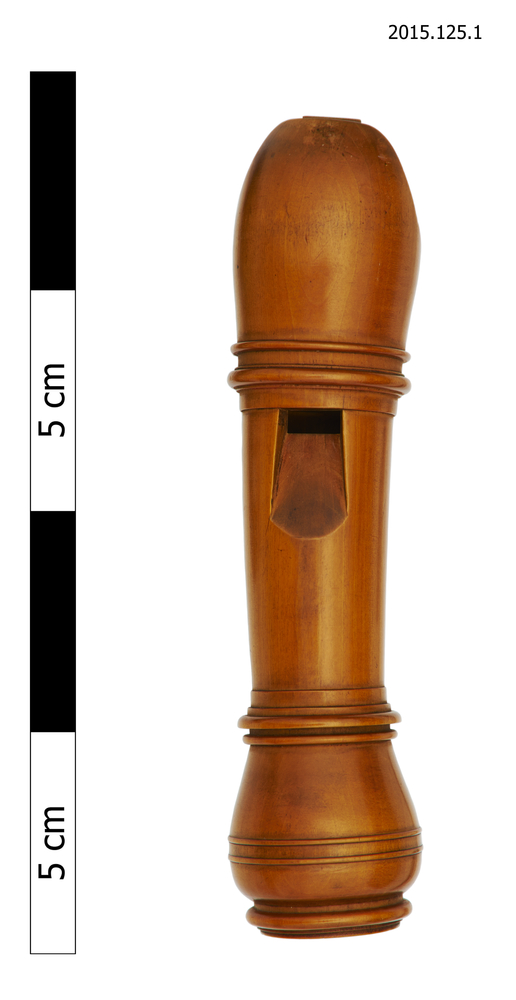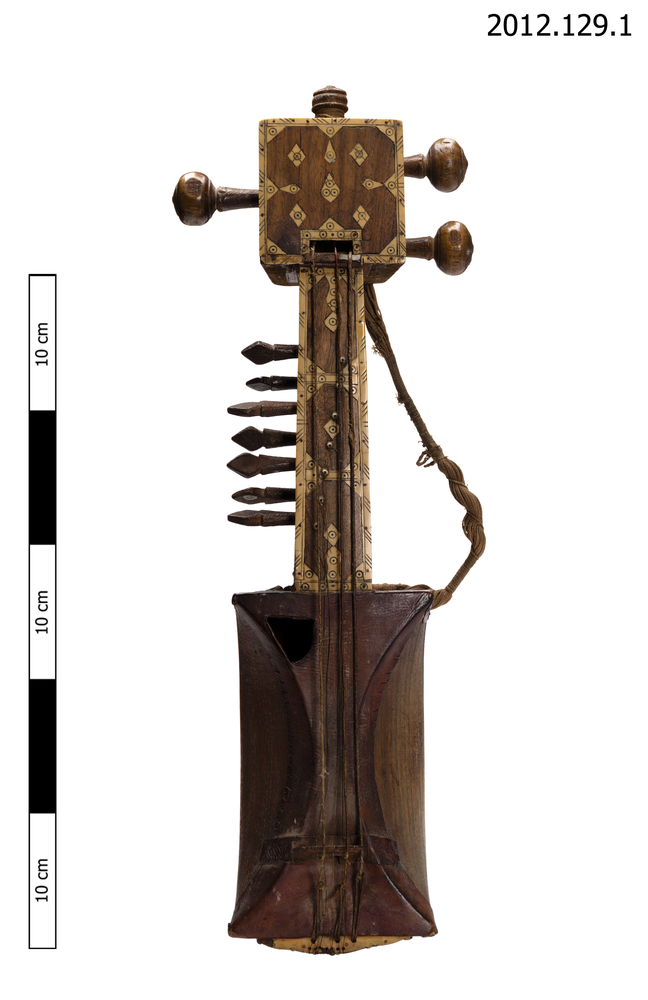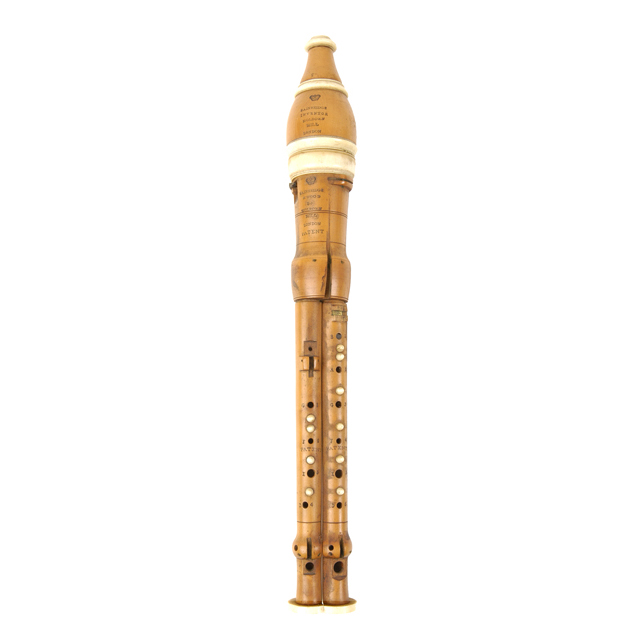
English double flageolet. Boxwood with brass fittings and ivory studs. Block mounts for keys, all of which are missing apart from one shut off (wind-cutter) key in stock. String lapped tenons. Five ivory ferrules. Mouthpiece missing. Wind distributor stamped: 2; Sponge chamber stamped: BAINBRIDGE/INVENTOR/HOLBORN/HILL/LONDON; with crown emblem above inscription. Stock stamped: BAINBRIDGE/& WOOD/35/HOLBORN/HILL/LONDON/PATENT; with crown emblem above inscription and a cross shape beneath right hand shut off key. Left hand pipe and right hand pipe are stamped: PATENT; between the sound holes. Left hand pipe has numbers 1-6 stamped on left side of holes and note names on right side signifying effective speaking lengths: B,A,G,F,E,D; Right hand pipe has numbers 1-4 to the left of tone holes and note names: G,F,E,D; to the right.
overall: 372 x 48 x 48 mm
The flageolet is a duct flute with mediaeval origins. The English flageolet differs from the earlier French designs in the arrangement of the finger-holes. William Bainbridge was one of the most innovative makers of English flageolets and marketed the instrument to amateur performers. His flageolet had an ivory mouthpiece, a sponge chamber to capture moisture from the player's breath and ivory studs to guide the fingers to the holes. Bainbridge later developed the double flageolet (of which this is an example), upon which the two pipes are played simultaneously, sounding a third apart. So called 'wind-cutter' keys on the stock section allow the player to close off one or other of the pipes, with the left hand pipe designed to be used either on its own or in combination. The triple flageolet was also a Bainbridge invention, and the third pipe he added to this instrument provided a drone beneath the other two.



